Failure Mechanism and Stability Control Technology of Slope during Open-Pit Combing Underground Extraction: A Case Study from Shanxi Province of China
Abstract
:1. Introduction
2. Background of the Engineering
2.1. Overview of the Project
2.1.1. Geological Settings
2.1.2. Location of the Anjialing North and the Well-Working Coal Mining II Mine
2.2. Testing of Geotechnical and Physical Properties in the Study Area
3. Model Tests
3.1. Test Methods and Equipment
3.2. Similar Material Models and Similar Parameters
3.2.1. Theory and Methods
3.2.2. Similar Material Parameters
3.2.3. Proportioning of Model Materials
3.2.4. Point Settings and Model Boundaries
3.2.5. Experimental Program
4. Results and Analysis
4.1. Analysis of the Formation Mechanism and Rock Movement Pattern of the “Three Zones” in Close Combination of Coal Seam Mining
4.2. Analysis of the Formation Mechanism and Rock Movement Pattern of the “Three Zones” in Single-Seam Mining
4.3. Analysis of the Formation Mechanism and Rock Movement Pattern of the “Three Zones” in Single-Seam Mining after the Footing of the Slope
4.4. Analysis of the Evolution of Slope Deformation in the Process of OPUG
5. Discussion
5.1. Analysis of Coupling Effects in the Process of OPUG
5.2. Techniques for Slope Stability Control of Open-Pit Mine
5.2.1. Optimizing the Spatial and Temporal Relationship in the Process of OPUG
5.2.2. Optimizing the Mining Plan in the Process of OPUG
5.2.3. Monitoring and Early Warning Techniques
6. Conclusions
Author Contributions
Funding
Institutional Review Board Statement
Informed Consent Statement
Data Availability Statement
Conflicts of Interest
References
- Du, H.; Song, D.; Chen, Z.; Shu, H.; Guo, Z. Prediction model oriented for landslide displacement with step-like curve by applying ensemble empirical mode decomposition and the PSO-ELM method. J. Clean. Prod. 2020, 270, 122248. [Google Scholar] [CrossRef]
- Emanov, A.A.; Emanov, A.F.; Fateev, A.V.; Leskova, E.V. Simultaneous Impact of Open-Pit and Underground Mining on the Subsurface and Induced Seismicity. Seism. Instrum. 2018, 54, 479–487. [Google Scholar] [CrossRef]
- Duan, B.; Xia, H.; Yang, X. Impacts of bench blasting vibration on the stability of the surrounding rock masses of roadways. Tunn. Undergr. Space Technol. 2018, 71, 605–622. [Google Scholar] [CrossRef]
- Li, X.; Wang, Y.; Hu, Y.; Zhou, C.; Zhang, H. Numerical Investigation on Stratum and Surface Deformation in Underground Phosphorite Mining Under Different Mining Methods. Front. Earth Sci. 2022, 10, 831856. [Google Scholar] [CrossRef]
- Chen, T.; Mitri, H.S. Strategies for surface crown pillar design using numerical modelling—A case study. Int. J. Rock Mech. Min. Sci. 2021, 138, 104599. [Google Scholar] [CrossRef]
- Prostov, S.; Shabanov, E.; Sokolov, M.; Shabdanov, M. Improving earthquake resistance of structures by injection consolidation of earth foundations. In Proceedings of the 5th International Innovative Mining Symposium (IISM), Kemerovo, Russia, 19–21 October 2020. [Google Scholar]
- Neverov, A.A.; Nikolsky, A.M.; Tsymbalyuk, T.A. Geomechanical justification of geotechnical situation in coal extraction with highwall mining system. IOP Conf. Ser. Earth Environ. Sci. 2020, 523, 012005. [Google Scholar] [CrossRef]
- Konurin, A.I.; Shchukin, S.A.; Neverov, S.A. Extraction of ore reserves from undermined protective pillar under open pit bottom. IOP Conf. Ser. Earth Environ. Sci. 2020, 523, 012007. [Google Scholar] [CrossRef]
- Kalenchuk, K.; Falmagne, V.; Gelover, A.; Montiel, I.; Luzania, J. Risk Evaluation, Design, Implementation, Instrumentation, and Verification for Crown Pillar Extraction at Pinos Altos Mine. Rock Mech. Rock Eng. 2019, 52, 4997–5011. [Google Scholar] [CrossRef]
- MacNeil, J.A.L.; Dimitrakopoulos, R.G. A stochastic optimization formulation for the transition from open pit to underground mining. Optim. Eng. 2017, 18, 793–813. [Google Scholar] [CrossRef]
- King, B.; Goycoolea, M.; Newman, A. Optimizing the open pit-to-underground mining transition. Eur. J. Oper. Res. 2017, 257, 297–309. [Google Scholar] [CrossRef]
- Zhang, J.; Wang, Z.; Song, Z. Numerical study on movement of dynamic strata in combined open-pit and underground mining based on similar material simulation experiment. Arab. J. Geosci. 2020, 13, 785. [Google Scholar] [CrossRef]
- Varga, S.; Benndorf, J. Geostatistical Simulation for Filling Misclassified Pixels in Hyperspectral Images. AIP Conf. Proc. 2020, 2209, 040001. [Google Scholar]
- Kuznetsova, L.V.; Anfyorov, B.A. Combined geotechnology potentials in the process of coal deposits integrated development. IOP Conf. Ser. Earth Environ. Sci. 2019, 377, 012003. [Google Scholar] [CrossRef]
- Ajamzadeh, M.; Sarfarazi, V.; Dehghani, H. Evaluation of plow system performance in long-wall mining method using particle flow code. Int. J. Coal Sci. Technol. 2019, 6, 518–535. [Google Scholar] [CrossRef] [Green Version]
- Porathur, J.L.; Jose, M.; Bhattacharjee, R.; Tewari, S. Numerical modeling approach for design of water-retaining dams in underground hard rock minesa case example. Arab. J. Geosci. 2018, 11, 750. [Google Scholar] [CrossRef]
- Stead, D.; Wolter, A. A critical review of rock slope failure mechanisms: The importance of structural geology. J. Struct. Geol. 2015, 74, 1–23. [Google Scholar] [CrossRef]
- Stead, D.; Eberhardt, E.; Coggan, J.S. Developments in the characterization of complex rock slope deformation and failure using numerical modelling techniques. Eng. Geol. 2006, 83, 217–235. [Google Scholar] [CrossRef]
- Scholtès, L.; Donzé, F.-V. Modelling progressive failure in fractured rock masses using a 3D discrete element method. Int. J. Rock Mech. Min. Sci. 2012, 52, 18–30. [Google Scholar] [CrossRef]
- Jiayi, S.; Murat, K. Three-dimensional numerical analysis for rock slope stability using shear strength reduction method. Can. Geotech. J. 2014, 51, 164–172. [Google Scholar] [CrossRef]
- Amini, M.; Majdi, A.; Veshadi, M.A. Stability Analysis of Rock Slopes Against Block-Flexure Toppling Failure. Rock Mech. Rock Eng. 2012, 45, 519–532. [Google Scholar] [CrossRef]
- Johari, A.; Lari, A.M. System probabilistic model of rock slope stability considering correlated failure modes. Comput. Geotech. 2017, 81, 26–38. [Google Scholar] [CrossRef]
- Zhou, C.; Lu, S.; Jiang, N.; Zhang, D.; Zhang, Z.; Miao, G. Rock Mass Deformation Characteristics in High-Steep Slopes Influenced by Open-Pit to Underground Mining. Geotech. Geol. Eng. 2016, 34, 847–866. [Google Scholar] [CrossRef]
- Luo, Y.-Z.; Wu, A.-X.; Liu, X.-P.; Wang, H.-J. Stability and reliability of pit slopes in surface mining combined with underground mining in Tonglushan mine. J. Cent. South Univ. Technol. 2004, 11, 434–439. [Google Scholar] [CrossRef]
- Dagdelen, K.; Traore, I. Open pit transition depth determination through global analysis of open pit and underground mine production scheduling. In Advances in Applied Strategic Mine Planning; Springer: Berlin/Heidelberg, Germany, 2018; pp. 287–296. [Google Scholar]
- Gischig, V.; Amann, F.; Moore, J.R.; Loew, S.; Eisenbeiss, H.; Stempfhuber, W. Composite rock slope kinematics at the current Randa instability, Switzerland, based on remote sensing and numerical modeling. Eng. Geol. 2011, 118, 37–53. [Google Scholar] [CrossRef]
- Li, H.-J.; Zhong, H.-Y.; Li, W.-C. Research on stability of a slope due to underground mining. J. Coal Sci. Eng. 2013, 19, 474–482. [Google Scholar] [CrossRef]
- Jiang, N.; Zhou, C.; Lu, S.; Zhang, Z. Effect of Underground Mine Blast Vibrations on Overlaying Open Pit Slopes: A Case Study for Daye Iron Mine in China. Geotech. Geol. Eng. 2018, 36, 1475–1489. [Google Scholar] [CrossRef]
- Cao, W.; Sheng, Y.; Wu, J.; Li, J.; Chou, Y.; Li, J. Simulation analysis of the impacts of underground mining on permafrost in an opencast coal mine in the northern Qinghai–Tibet Plateau. Environ. Earth Sci. 2017, 76, 711. [Google Scholar] [CrossRef]
- Wang, X.-F.; Zhang, D.-S.; Zhang, C.-G.; Fan, G.-W. Mechanism of mining-induced slope movement for gullies overlaying shallow coal seams. J. Mt. Sci. 2013, 10, 388–397. [Google Scholar] [CrossRef]
- Li, B.; Feng, Z.; Wang, G.; Wang, W. Processes and behaviors of block topple avalanches resulting from carbonate slope failures due to underground mining. Environ. Earth Sci. 2016, 75, 694. [Google Scholar] [CrossRef]
- Kovrizhnykh, A.M. Deformation and failure of open and underground mine structures under creep. J. Min. Sci. 2009, 45, 541–550. [Google Scholar] [CrossRef]
- Du, H.; Song, D.; Chen, Z.; Guo, Z. Experimental study of the influence of structural planes on the mechanical properties of sandstone specimens under cyclic dynamic disturbance. Energy Sci. Eng. 2020, 8, 4043–4063. [Google Scholar] [CrossRef]
- Deng, Z.; Liu, X.; Zhou, X.; Yang, Q.; Chen, P.; de la Fuente, A.; Ren, L.; Du, L.; Han, Y.; Xiong, F.; et al. Main engineering problems and countermeasures in ultra-long-distance rock pipe jacking project: Water pipeline case study in Chongqing. Tunn. Undergr. Space Technol. 2022, 123, 104420. [Google Scholar] [CrossRef]
- Deng, Z.; Liang, N.; Liu, X.; de la Fuente, A.; Lin, P.; Peng, H. Analysis and application of friction calculation model for long-distance rock pipe jacking engineering. Tunn. Undergr. Space Technol. 2021, 115, 104063. [Google Scholar] [CrossRef]
- Deng, Z.; Liu, X.; Zhou, X.; de la Fuente, A.; Han, Y.; Xiong, F.; Peng, H. Field monitoring of mechanical parameters of deep-buried jacketed-pipes in rock: Guanjingkou Water Control Project. Tunn. Undergr. Space Technol. 2022, 125, 104531. [Google Scholar] [CrossRef]
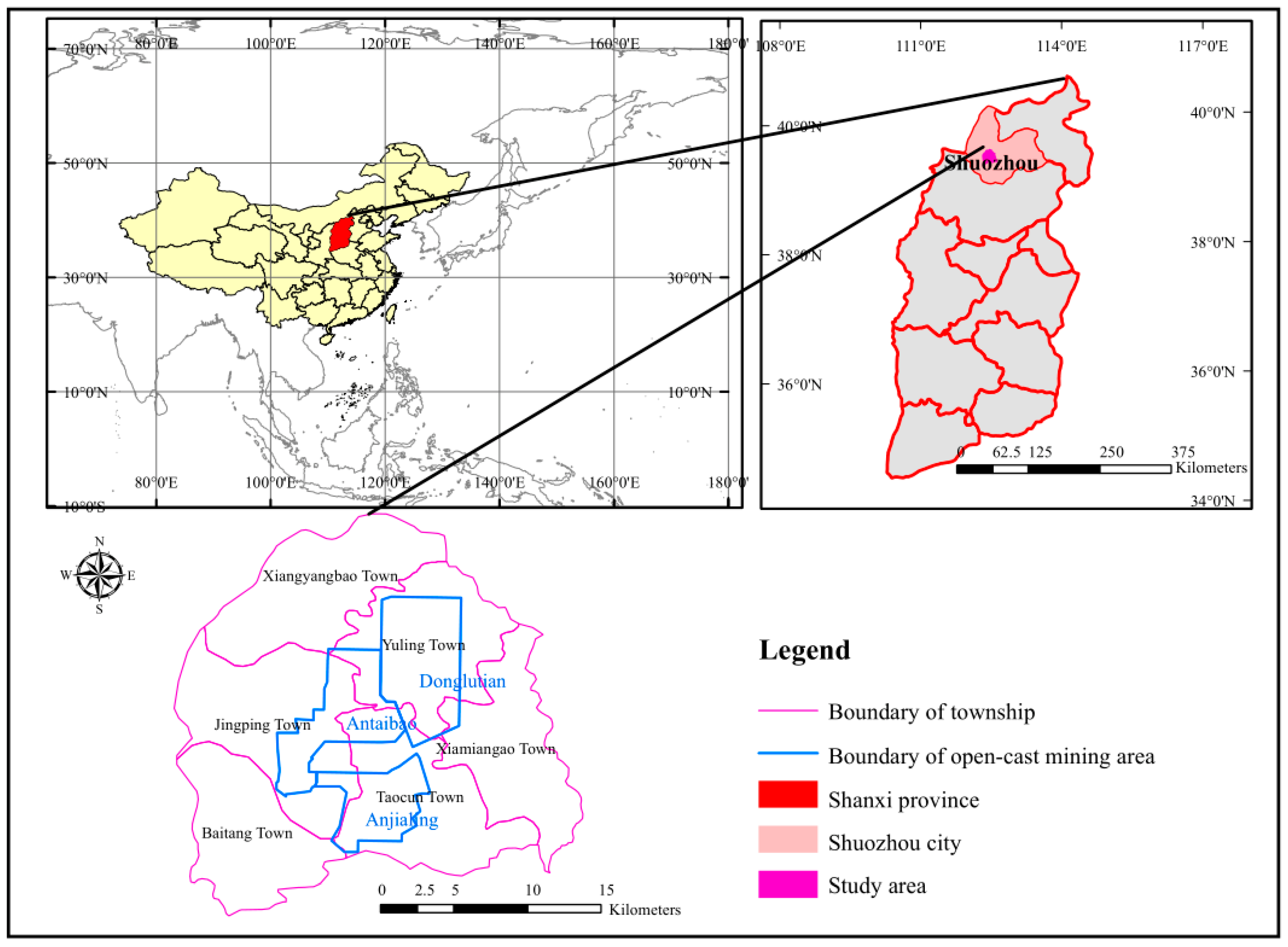


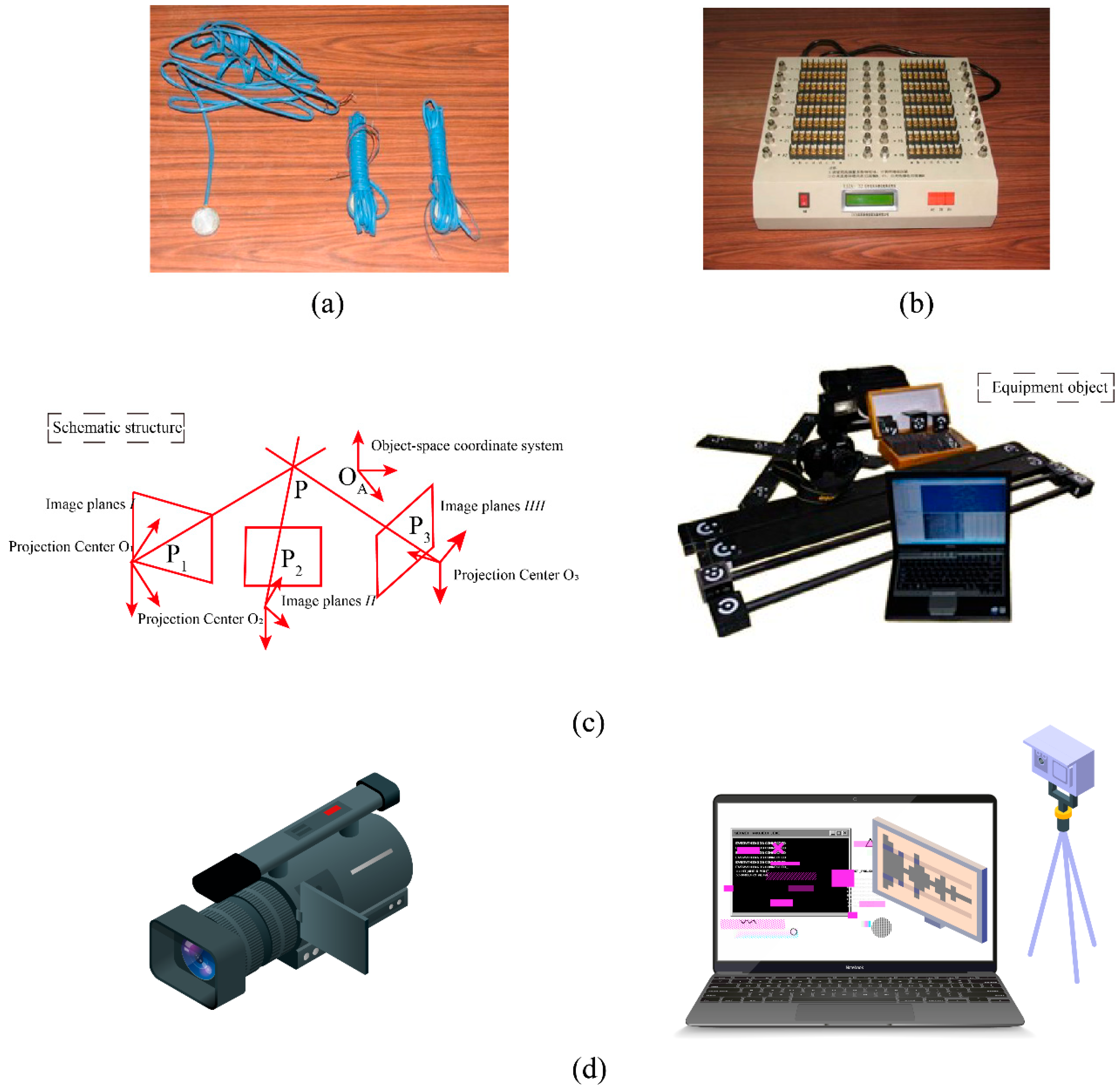
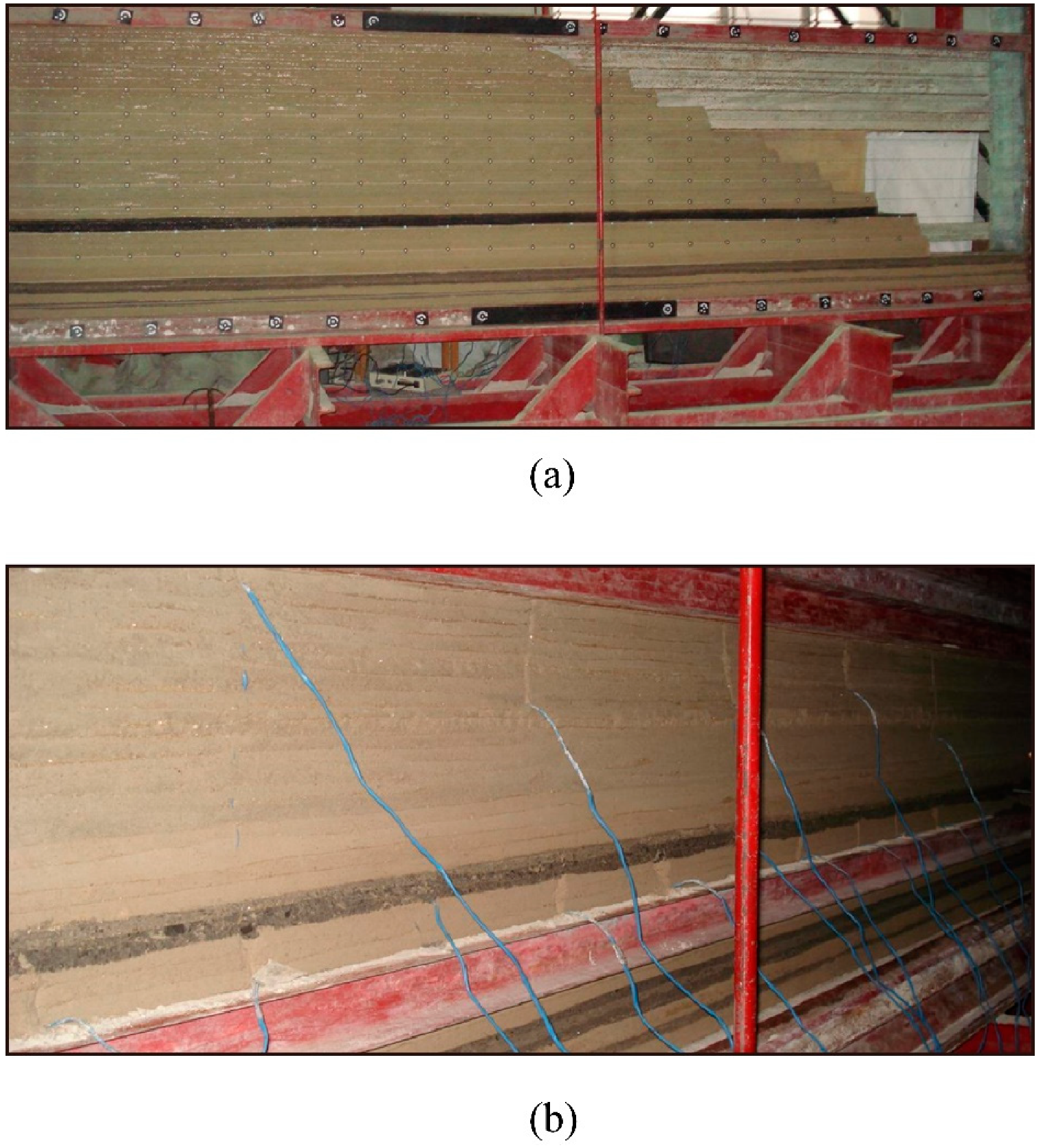
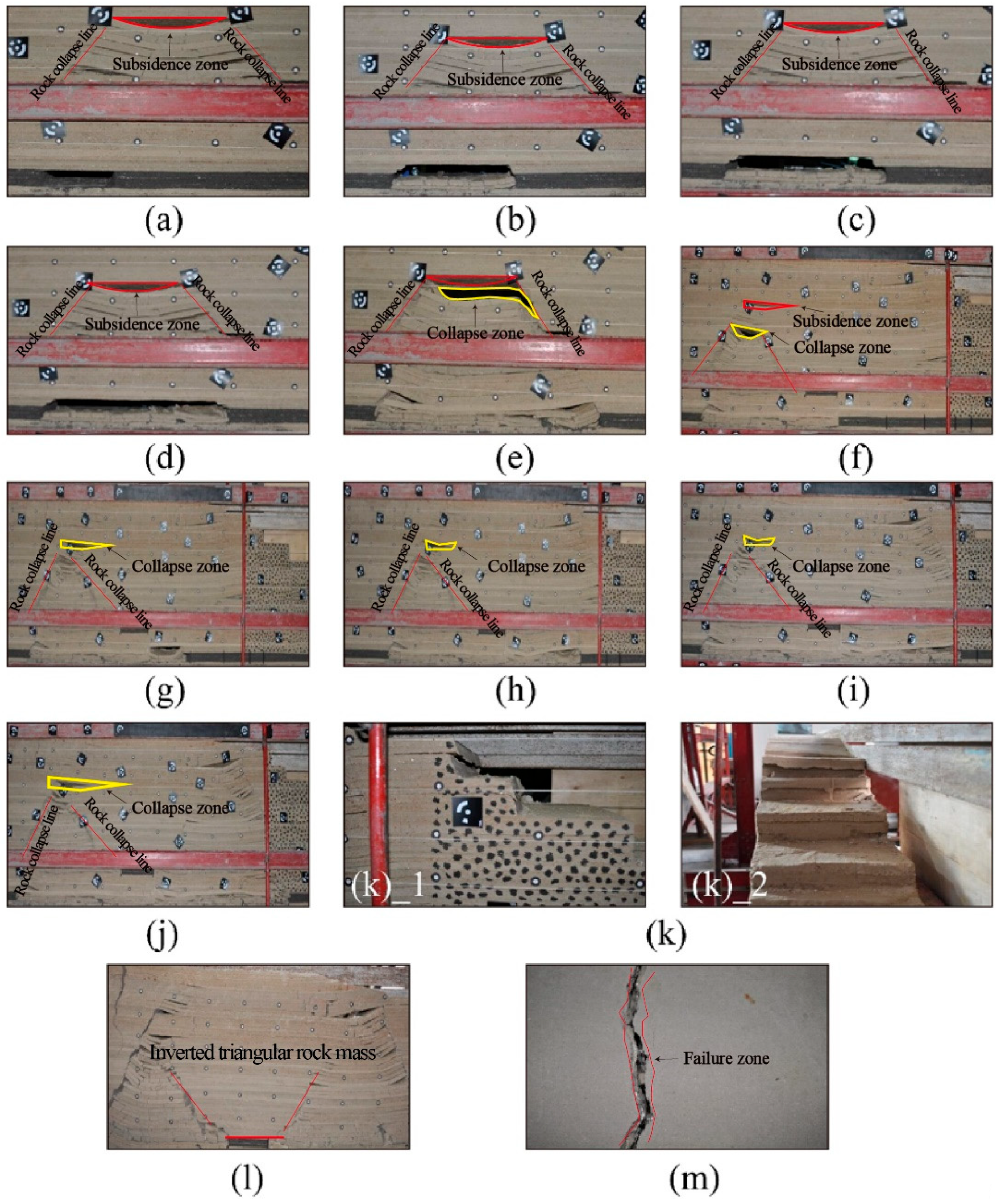
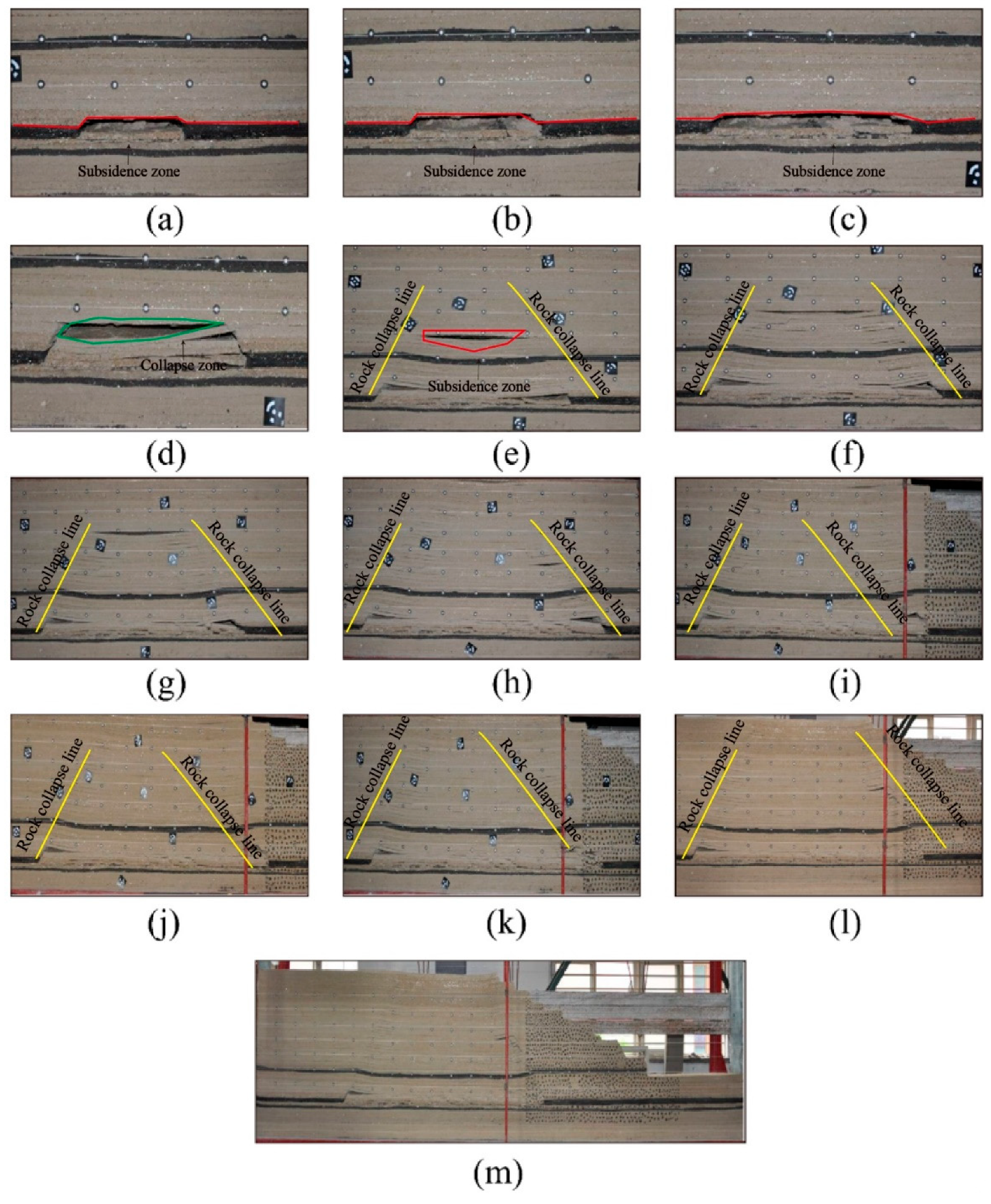


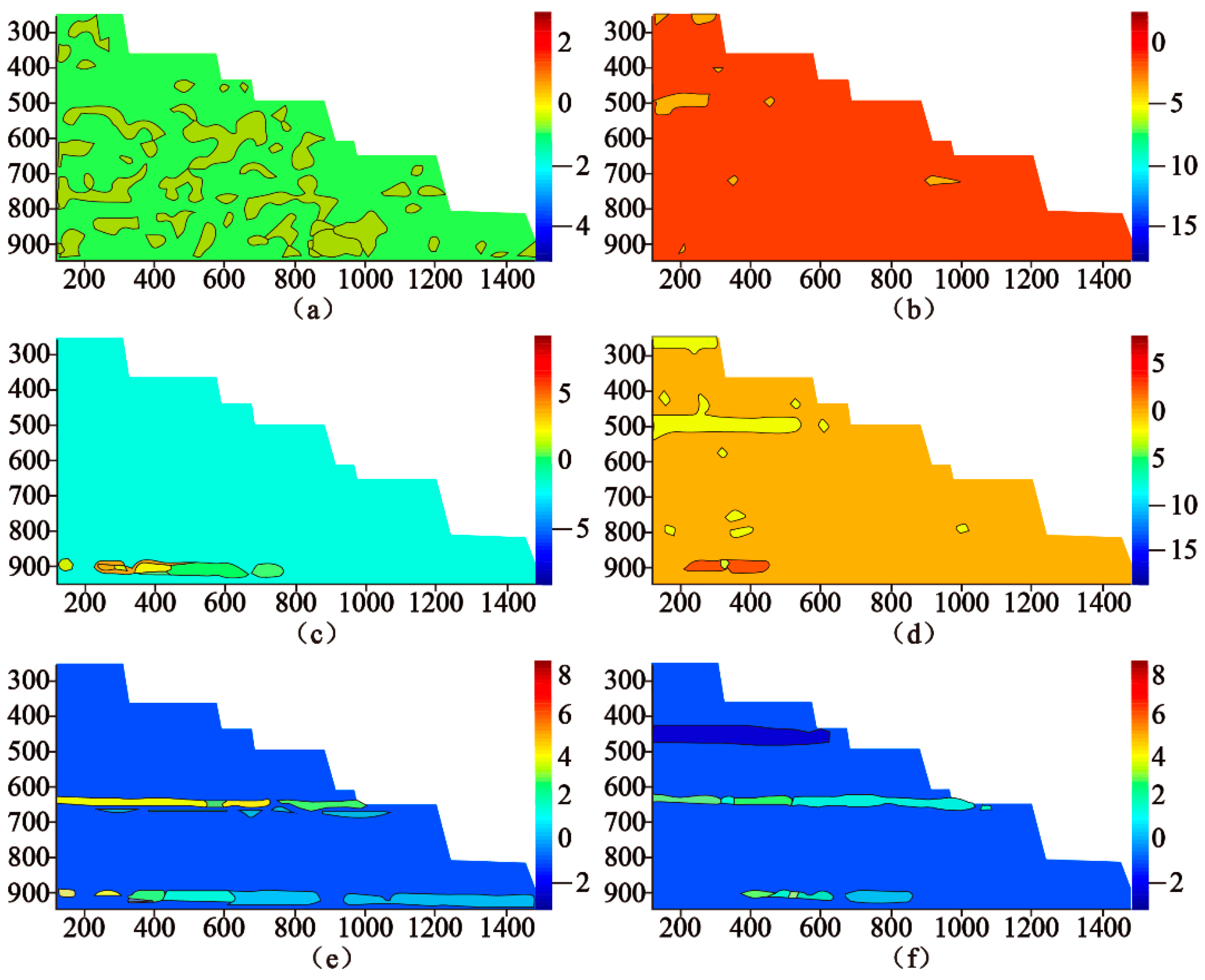
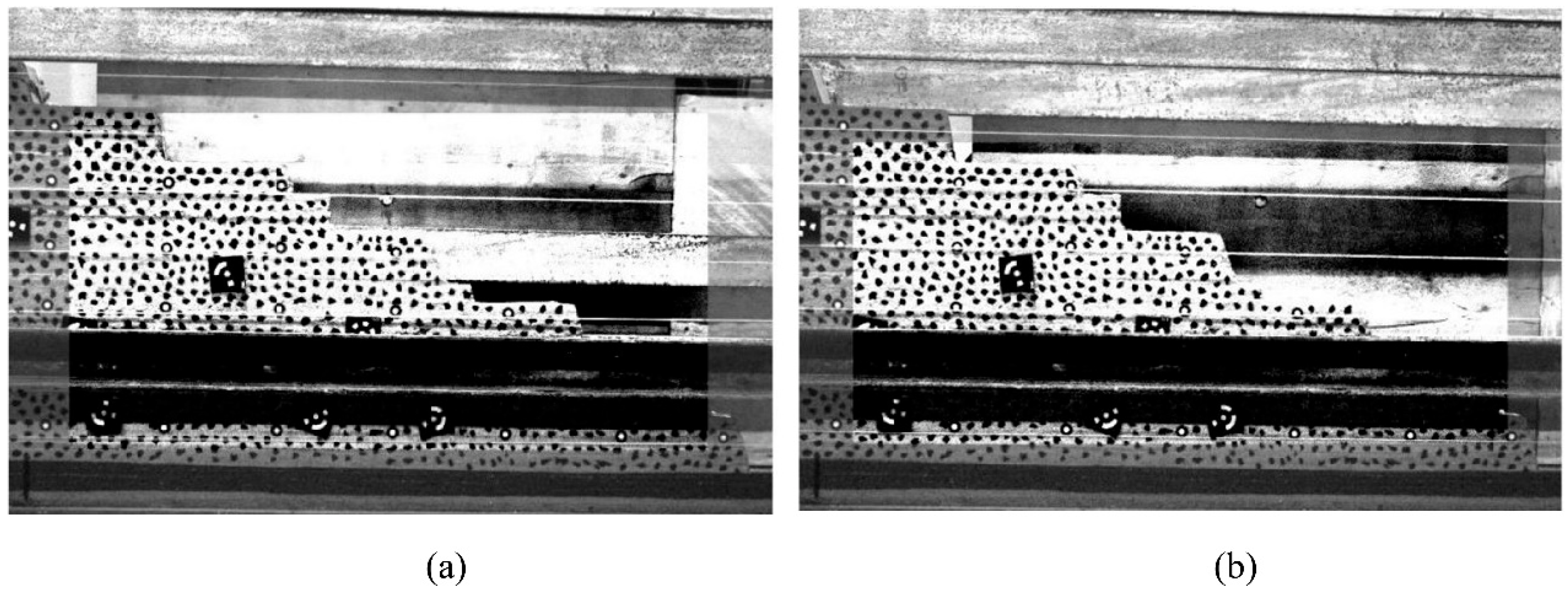


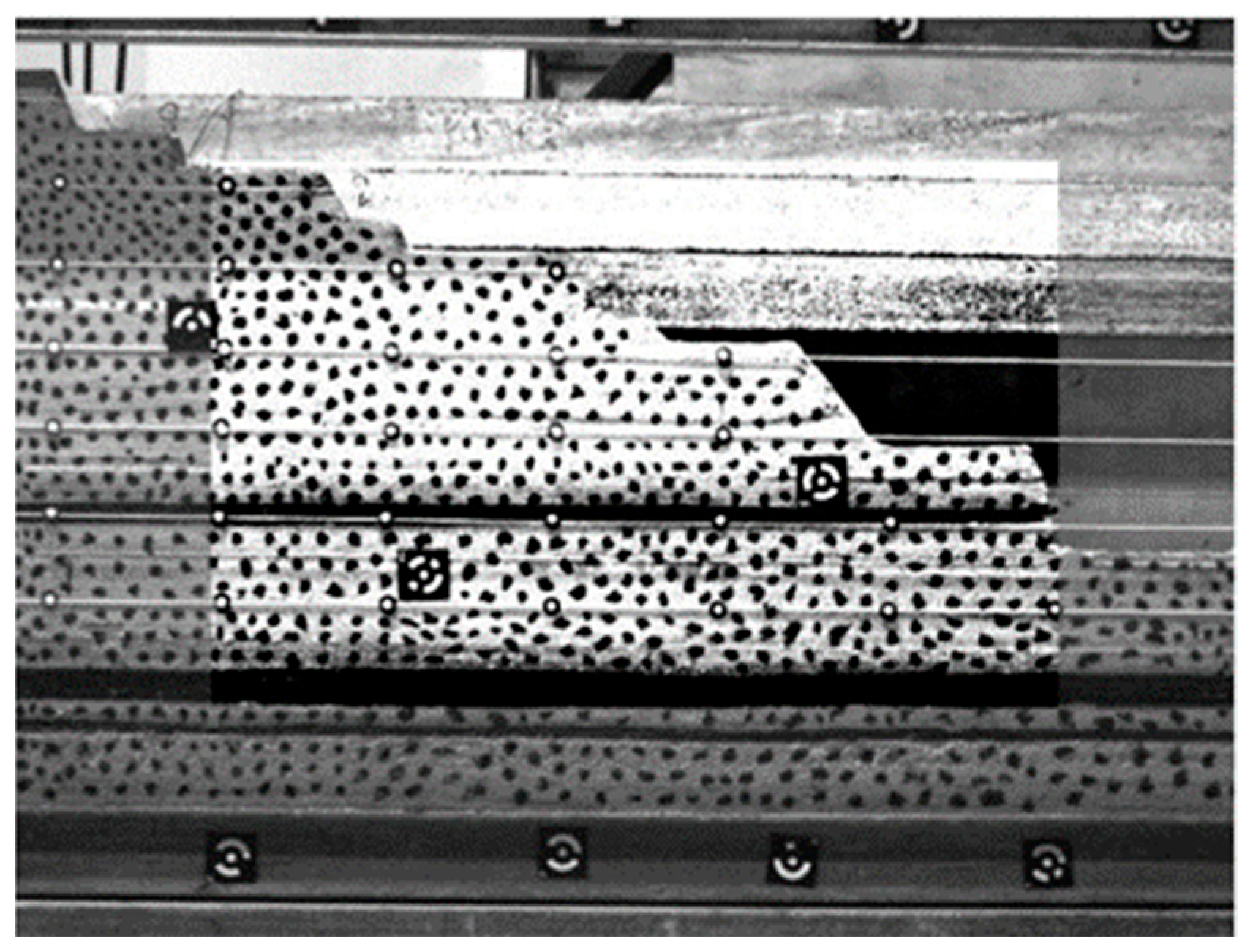

| Soil Sample No. | Physical Properties of Soil | Shear Test | Name | ||||||
|---|---|---|---|---|---|---|---|---|---|
| Moisture Content (%) | Unit Weight Gs | Wet Density ρ (g/cm3) | Dry Density ρd (g/cm3) | Saturation Sr (%) | Pore Ratio e | CohesionC (kPa) | Friction Angle Φ (°) | ||
| ZJ1 | 7.9 | 2.70 | 1.73 | 1.54 | 43.6 | 0.750 | 30.55 | 19.4 | Silt |
| ZJ4 | 13.3 | 2.70 | 1.84 | 1.52 | 73.1 | 0.776 | 34.95 | 37.0 | Silt |
| ZJ5 | 8.2 | 2.72 | 2.14 | 1.81 | 98.3 | 0.501 | 34.15 | 23.3 | Silt |
| ZJ6 | 8.9 | 2.70 | 2.12 | 1.82 | 91.5 | 0.481 | 35.9 | 29.9 | Silt |
| ZJ8 | 22.1 | 2.71 | 1.78 | 1.55 | 54.6 | 0.754 | 18.01 | 24.1 | Silty clay |
| ZJ10 | 13.4 | 2.72 | 1.92 | 1.53 | 89.2 | 0.778 | 29.3 | 30.4 | Silt |
| ZJ11 | 12.9 | 2.70 | 2.05 | 1.78 | 79.3 | 0.517 | 33.2 | 18.7 | Silt |
| ZJ12 | 21.0 | 2.72 | 2.03 | 1.67 | 93.4 | 0.629 | 27.35 | 16.0 | Silty clay |
| ZJ15 | 25.7 | 2.72 | 2.03 | 1.62 | 88.1 | 0.543 | 28.48 | 19.4 | Silty clay |
| ZJ17 | 22.1 | 2.71 | 2.04 | 1.69 | 90.1 | 0.548 | 15.6 | 21.9 | Silty clay |
| ZJ18 | 25.5 | 2.72 | 2.03 | 1.68 | 92.4 | 0.681 | 15.85 | 22.2 | Silty clay |
| ZJ20 | 21.6 | 2.72 | 1.99 | 1.70 | 90.3 | 0.872 | 48.45 | 25.7 | Silty clay |
| No. | Density (g/cm3) | Uniaxial Compressive Strength (MPa) | Point Load Compression Strength (MPa) | Poisson’s Ratio μ50 | Saturated Deformation Modulus E50 (104 MPa) | Saturated Deformation Modulus | Name | |
|---|---|---|---|---|---|---|---|---|
| Saturation | Saturation | Saturation | Saturation | C (MPa) | Φ (°) | |||
| KJ-1 | 2.63 | 28.3 | 0.79 | 0.32 | 0.31 | 5.84 | 37.9 | Sandstone |
| KJ-2 | 2.53 | 27.6 | 0.8 | 0.24 | 1.17 | 4.86 | 35.1 | Sandstone |
| KJ-3 | 2.48 | 11.3 | 0.3 | 0.26 | 1.03 | 3.72 | 29.9 | Mudstone |
| KJ-4 | 2.56 | 23.5 | 0.69 | 0.26 | 1.34 | 5.59 | 31.9 | Mudstone |
| KJ-5 | 2.56 | 16.5 | 0.66 | 0.27 | 1.18 | 4.15 | 30.4 | Argillary sandstone |
| KJ-6 | 2.59 | 17.4 | 0.54 | 0.35 | 0.49 | 3.06 | 33.4 | Argillary sandstone |
| KJ-7 | 2.62 | 30.3 | 1.04 | 0.27 | 2.84 | 2.13 | 40.8 | Sandstone |
| KJ-8 | 2.23 | 8.5 | 0.15 | 0.33 | 0.29 | 5.79 | 31.6 | Mudstone |
| KJ-9 | 2.56 | 24 | 0.73 | 0.28 | 1.09 | 4.75 | 32.4 | Coal |
| KJ-10 | 2.58 | 24 | 0.73 | 0.28 | 1.09 | 4.75 | 32.4 | Sandstone |
| Geometric Similarity Parameter (/m) | Motion Similar Parameters (/min) | Power Similar Parameters (/MPa) |
|---|---|---|
| 250 | 30 | 0.002 |
| Lithology | Sand to Rubber Ratio | Glues | Compressive Strength/MPa | ||
|---|---|---|---|---|---|
| Lime | Gypsum | Prototype | Model | ||
| Discharge material | 7:1 | 0.6 | 0.4 | 1.71 | 0.0034 |
| Quaternary | 7:1 | 0.6 | 0.4 | 1.72 | 0.0035 |
| Weathered sandstone | 4:1 | 0.4 | 0.6 | 56.5 | 0.113 |
| Sandstone | 3:1 | 0.5 | 0.5 | 95.1 | 0.1902 |
| Clay ore | 6:1 | 0.4 | 0.6 | 58.3 | 0.1166 |
| 4# Coal | 5:1 | 0.5 | 0.5 | 40.9 | 0.0818 |
| Sandy mudstone | 6:1 | 0.4 | 0.6 | 64.1 | 0.1282 |
| Fine sandstone | 4:1 | 0.4 | 0.6 | 99.7 | 0.1994 |
| Siltstone | 4:1 | 0.4 | 0.6 | 107.3 | 0.2146 |
| Gray sandstone | 4:1 | 0.5 | 0.5 | 54.7 | 0.1094 |
| 9# Coal | 5:1 | 0.5 | 0.5 | 38.6 | 0.0772 |
| Mudstone | 4:1 | 0.5 | 0.5 | 54.5 | 0.109 |
| 11# Coal | 5:1 | 0.5 | 0.5 | 36.5 | 0.073 |
| Medium and fine sandstone | 3:1 | 0.3 | 0.7 | 99.4 | 0.1988 |
Publisher’s Note: MDPI stays neutral with regard to jurisdictional claims in published maps and institutional affiliations. |
© 2022 by the authors. Licensee MDPI, Basel, Switzerland. This article is an open access article distributed under the terms and conditions of the Creative Commons Attribution (CC BY) license (https://creativecommons.org/licenses/by/4.0/).
Share and Cite
Shi, S.; Guo, Z.; Ding, P.; Tao, Y.; Mao, H.; Jiao, Z. Failure Mechanism and Stability Control Technology of Slope during Open-Pit Combing Underground Extraction: A Case Study from Shanxi Province of China. Sustainability 2022, 14, 8939. https://doi.org/10.3390/su14148939
Shi S, Guo Z, Ding P, Tao Y, Mao H, Jiao Z. Failure Mechanism and Stability Control Technology of Slope during Open-Pit Combing Underground Extraction: A Case Study from Shanxi Province of China. Sustainability. 2022; 14(14):8939. https://doi.org/10.3390/su14148939
Chicago/Turabian StyleShi, Shuaihang, Zizheng Guo, Peng Ding, Yabin Tao, Hui Mao, and Zhichao Jiao. 2022. "Failure Mechanism and Stability Control Technology of Slope during Open-Pit Combing Underground Extraction: A Case Study from Shanxi Province of China" Sustainability 14, no. 14: 8939. https://doi.org/10.3390/su14148939
APA StyleShi, S., Guo, Z., Ding, P., Tao, Y., Mao, H., & Jiao, Z. (2022). Failure Mechanism and Stability Control Technology of Slope during Open-Pit Combing Underground Extraction: A Case Study from Shanxi Province of China. Sustainability, 14(14), 8939. https://doi.org/10.3390/su14148939






